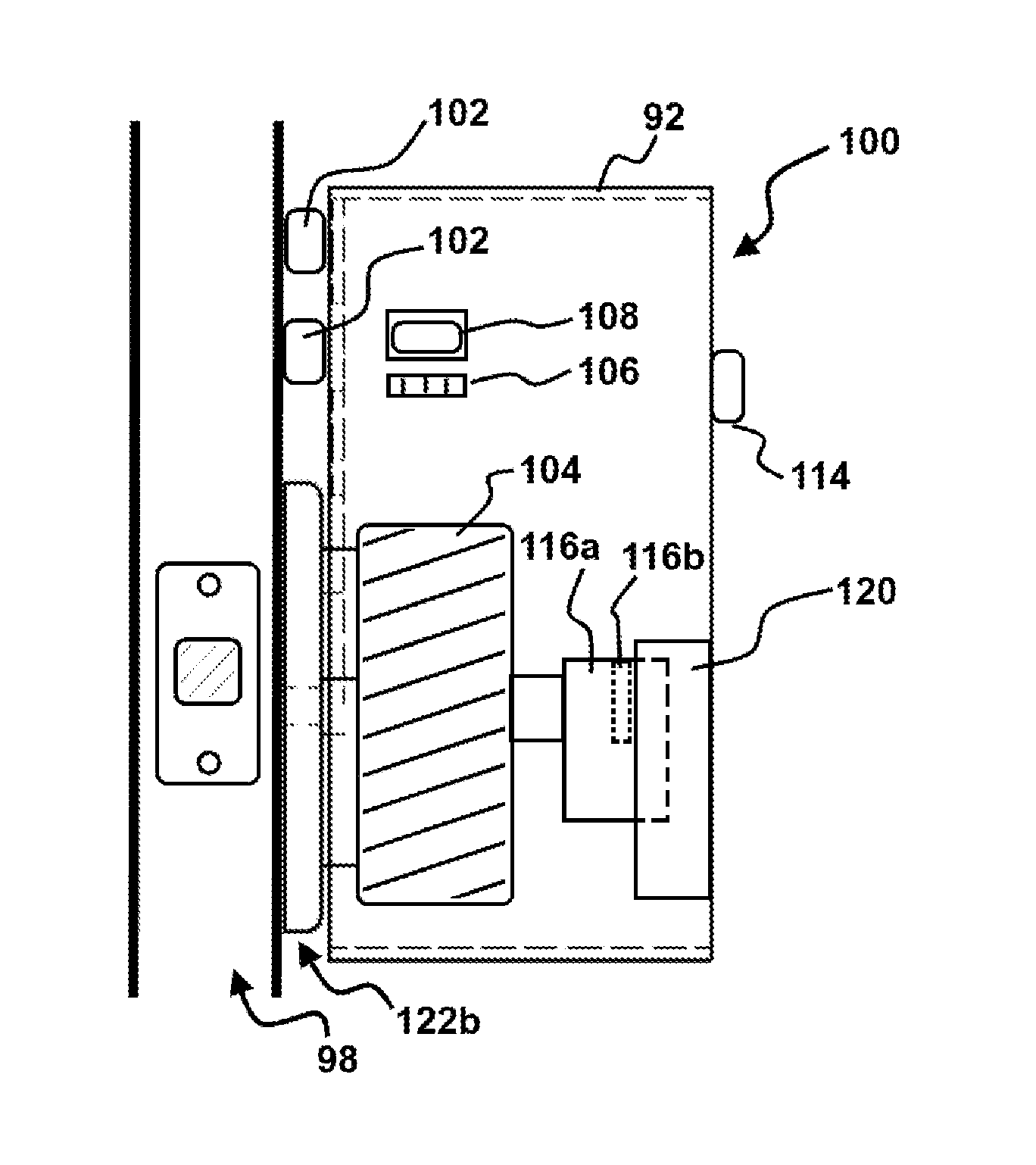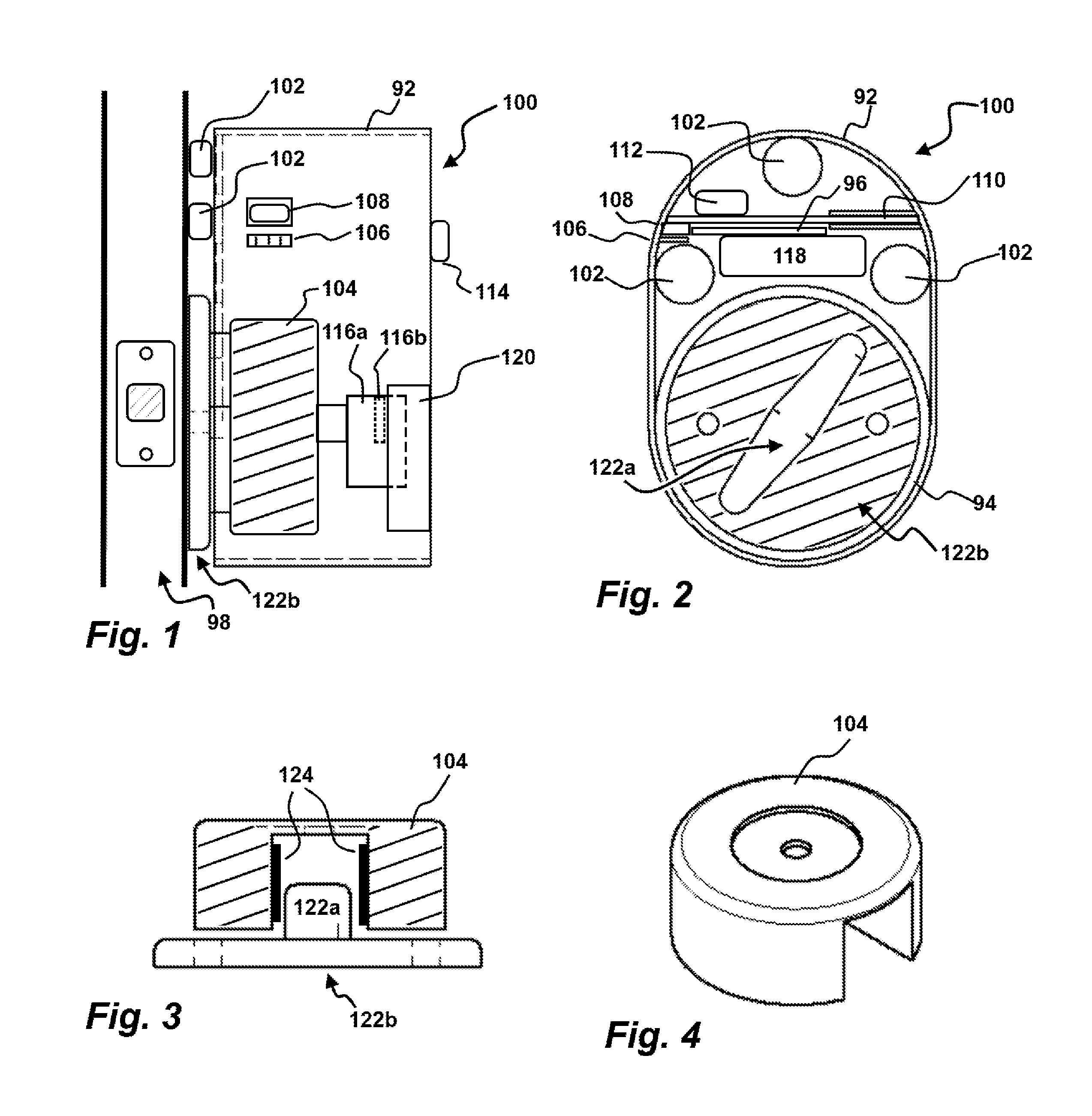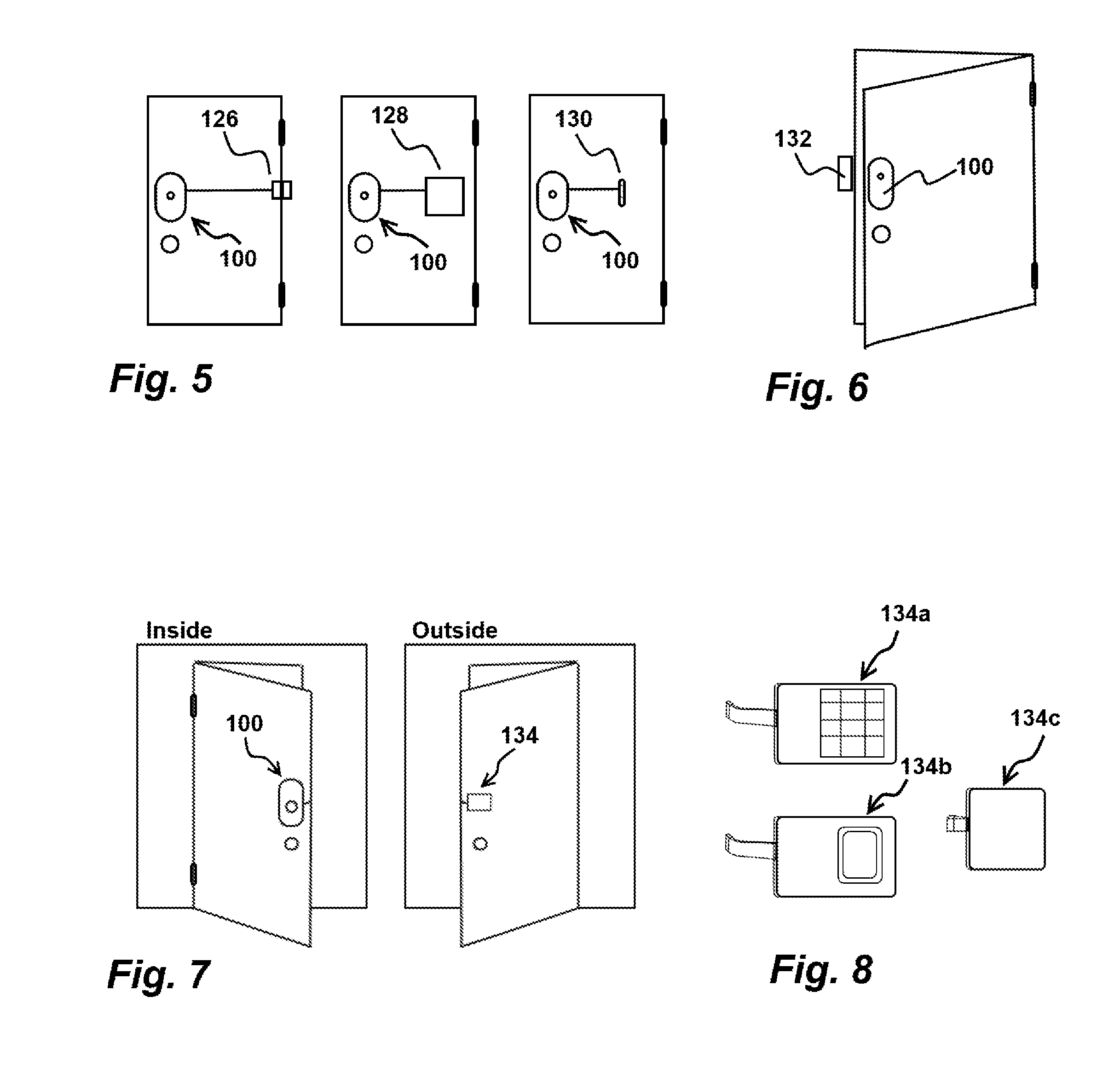Installation-Free Rechargeable Door Locking Apparatus, Systems and Methods
a rechargeable, installation-free technology, applied in the direction of instruments, building locks, construction, etc., can solve the problems of incomplete replacement of old or existing deadbolt apparatuses, inconvenient switching to another authentication method, and inability to operate smart locks, etc., to achieve and constant rotational speed and smoothness
- Summary
- Abstract
- Description
- Claims
- Application Information
AI Technical Summary
Benefits of technology
Problems solved by technology
Method used
Image
Examples
Embodiment Construction
[0050]Reference will now be made to various embodiments. While the present teachings will be described in conjunction with various embodiments, it will be understood that they are not intended to limit the present teachings to those embodiments. On the contrary, the present teachings are intended to cover various alternatives, modifications, and equivalents, as will be appreciated by those of skill in the art.
[0051]In various embodiments, and with reference to FIGS. 1-2, the smart lock, designated generally by the reference numeral 100, comprises a housing, as indicated at 92. Housing, sometimes also referred to herein as an enclosure, 92 is configured to fit over an existing, pre-installed deadbolt mechanism, as shown generally at 122. Housing can comprise any suitable substantially rigid or rigid resilient, material, such as a metallic material, or a plastic material. In some embodiments, housing 92 is comprised of a non-metallic polycarbonate material. In other embodiments, housi...
PUM
 Login to View More
Login to View More Abstract
Description
Claims
Application Information
 Login to View More
Login to View More - R&D
- Intellectual Property
- Life Sciences
- Materials
- Tech Scout
- Unparalleled Data Quality
- Higher Quality Content
- 60% Fewer Hallucinations
Browse by: Latest US Patents, China's latest patents, Technical Efficacy Thesaurus, Application Domain, Technology Topic, Popular Technical Reports.
© 2025 PatSnap. All rights reserved.Legal|Privacy policy|Modern Slavery Act Transparency Statement|Sitemap|About US| Contact US: help@patsnap.com



